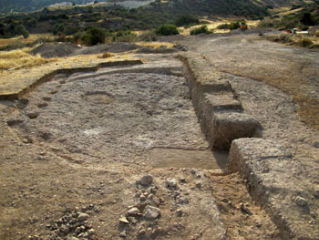French archaeological Mission of Klimonas

The excavation of Klimonas should allow to write a new page of Cypriot prehistory.
Excavations made on the archaeological site of Klimonas have shown that village communities settled in Cyprus between 9 100 and 8 600 BC, only a few centuries after the first settlers of the Neolithic began to cultivate wild cereals in the Near East (around 9,500 BC).
Archaeologists have found on the site the remains of a collective semi-buried 10 meters diameter building constructed in unbaked earth, which was intended to collect the shared crops, and around which were built domestic buildings. Inside the building, they have unearthed votive items, such as flint arrows or green stone beads, as well as tools similar to those found on contemporary Neolithic sites on the close continent. Remains of charred seeds of local plants and cereals introduced from the Levantine coast (such as emmer, one of the first introduced wheat from the Near East) were also found in Klimonas.
The French Ministry of Foreign Affairs, the French School of Athens and the National Museum of Natural History of Paris are involved in the running of the mission. The Department of Antiquities of Cyprus continuously supervises the works.
Director of axcavations: Jean Guilaine
The site is open to the public.
